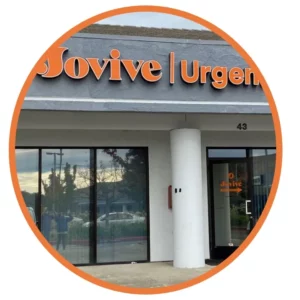The Ultimate Guide to Understanding Urgent Care Clinics
The Ultimate Guide to Understanding Urgent Care Clinics
Blog Article
Understanding the Role of Urgent Care in Providing Timely Therapy for Non-Life-Threatening Problems
Urgent care centers have emerged as an important element of the healthcare landscape, addressing the prompt needs of people with non-life-threatening problems. Understanding the subtleties of immediate treatment can considerably influence client results and the general efficiency of healthcare distribution.
What Is Urgent Treatment?
Urgent treatment refers to a classification of medical services made to resolve non-life-threatening problems that need prompt attention. These facilities serve as an intermediary in between medical care medical professionals and emergency situation areas, supplying a hassle-free choice for people who require punctual treatment without the substantial waiting times commonly linked with emergency departments.
Urgent treatment facilities are generally staffed by physician, consisting of physicians, nurse experts, and physician aides, who are trained to detect and deal with a large variety of problems. Common services supplied by these facilities consist of therapy for minor injuries, illnesses, and infections, in addition to analysis tests such as X-rays and lab work.
The accessibility of urgent care is an essential factor in its charm, as many centers operate beyond regular workplace hours, including weekends and evenings. When their main care service provider may not be accessible, this extensive availability enables clients to get timely care. In addition, urgent treatment centers commonly approve walk-in individuals, removing the demand for consultations. In general, urgent treatment plays an essential function in the health care system, ensuring individuals can access important clinical services promptly and efficiently.

Many people may locate themselves unclear regarding when to look for care at an immediate treatment center as opposed to a main care doctor or an emergency room. Immediate care is made to deal with non-life-threatening problems that require prompt attention yet are not severe enough to call for an emergency clinic go to.
Usually, one should think about immediate look after issues such as minor fractures, strains, cuts calling for stitches, or infections like urinary system tract infections. In addition, cold or influenza signs, breakouts, and sensitive reactions can additionally be properly taken care of in this setting.
It is essential to note that urgent care is not suitable for life-threatening emergencies, such as breast discomfort, trouble breathing, or extreme bleeding, which necessitate prompt emergency clinic treatment.
Individuals that do not have accessibility to a health care physician or can not safeguard a prompt visit might likewise gain from urgent treatment solutions. Eventually, comprehending when to utilize immediate treatment can cause much more effective health care shipment, permitting people to get the suitable degree of treatment based on their details wellness requirements.
Advantages of Urgent Care Centers
Picking immediate care facilities for non-life-threatening conditions offers numerous benefits that improve person experience and availability. One primary benefit is the minimized wait times contrasted to typical emergency situation rooms. Urgent treatment centers typically operate a first-come, first-served basis, permitting clients to get timely clinical interest without the long delays commonly related to healthcare facility setups.
Additionally, urgent treatment facilities give extended hours, consisting of weekends and nights, suiting clients with differing routines. This versatility guarantees that people can look for care when it is most practical for them, better advertising prompt intervention.

In addition, these centers often use a detailed variety of services, including small procedures and diagnostic tests, all under one roofing system. This consolidation of solutions not just simplifies the person experience yet also fosters a more natural technique to handling non-life-threatening wellness concerns, inevitably benefiting general person outcomes.
Usual Problems Treated
At immediate treatment centers, a range of non-life-threatening problems can be effectively treated, offering patients with available and timely clinical aid. These centers are particularly skilled at addressing concerns that need punctual focus but do not position an instant risk to life or limb.
Usual conditions dealt with at urgent care facilities include minor injuries such as cracks, pressures, and sprains. Urgent care facilities are equipped to perform essential analysis examinations, such as X-rays and lab examinations, allowing them to offer extensive care.
In addition, urgent treatment companies can provide vaccinations, helping to prevent the spread of transmittable conditions - Urgent Care. They additionally offer solutions for small treatments, such as suturing injuries or draining abscesses. By using these diverse solutions, immediate treatment centers play a vital role in bridging the void in between health care and emergency situation services, ensuring clients anchor obtain timely treatment for a variety of conditions without the need for long haul times usually associated with emergency situation spaces
Just How Urgent Treatment Supports Healthcare System
Urgent treatment centers play a vital function in supporting the overall healthcare system by reducing the problem on emergency departments and giving timely accessibility to healthcare for non-life-threatening problems. By managing cases such as small injuries, infections, and ailments, urgent treatment facilities allow emergency situation departments to focus on more essential clients needing instant focus.
In addition, urgent care centers enhance health care accessibility, providing extensive hours and a more convenient option to typical health care setups. This availability is specifically useful for people who may not have a regular doctor or who require instant treatment outside of normal workplace hours. Consequently, urgent treatment centers effectively decrease boost and wait times patient contentment.
In addition, urgent care centers add to cost financial savings for both clients and the medical care system by giving lower-cost solutions contrasted to emergency departments. This financial effectiveness is important in an age of rising health care prices, enabling people to receive essential treatment without sustaining inflated costs.
Verdict
Finally, immediate care centers play an essential function in the medical care system by delivering prompt therapy for non-life-threatening problems. By connecting the void between medical care and emergency clinic, these facilities make sure that patients receive timely medical focus without the extensive delay times commonly related to emergency situation departments. The availability and effectiveness of urgent treatment facilities add considerably to minimizing the overall concern on medical care resources, improving person end results, and advertising an extra efficient healthcare distribution system.
Urgent treatment centers have arised as a vital component of the healthcare landscape, addressing the immediate needs of clients with non-life-threatening conditions. Immediate care visits generally incur reduced out-of-pocket costs contrasted to emergency division visits, making treatment a lot more budget-friendly for individuals without jeopardizing quality. Immediate treatment facilities are equipped to perform needed diagnostic examinations, such as X-rays and lab tests, allowing them to give thorough treatment.
By providing these varied solutions, urgent treatment facilities play an essential duty in connecting the void in between primary treatment and emergency solutions, guaranteeing clients get timely therapy for a broad variety of conditions without the demand for long delay times normally associated with emergency situation rooms.
Furthermore, immediate care centers improve medical care availability, supplying extended hours and a more hassle-free option to traditional primary treatment setups.
Report this page